| Master Sergeant Michael West is a
Combat Controller qualified and very experienced in Joint Terminal
Attack Control (JTAC) and CloseAir Support (CAS). In September, 2006,
he was attached to one of several Army Special Forcesteams operating
near Kandahar, Afghanistan. |
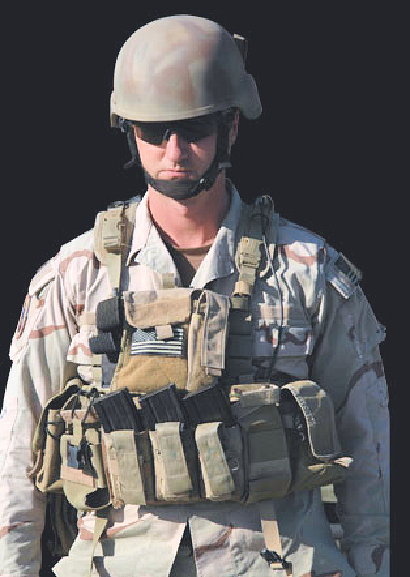 |
Sergeant
West’s
team leader wanted to occupy a dominant hill that offered a commanding
view of the surrounding areas. As another Coalition team pushed towards
the hill, they came under heavy attack and lost radio communications.
Sergeant West had been monitoring the frequency and took over.
He positively identified the friendly personnel and the enemy fighting
positions and called in close air support. He directed B-1B bombers to
destroy several buildings where ACM were sheltered. He then
cleared several A-10s for multiple strafing passes against enemy
positions. He simultaneously worked with a Predator Unmanned Aerial
Vehicle (UAV) overhead to scan for more targets. His efforts saved the
lives of his teammates and enable the team to seize the high ground.
His team was on a
reconnaissance mission supporting a larger Coalition
forces offensive designed to clear Panjaway Valley of all
Anti-Coalition militants (ACM). Intelligence estimated 800-1000 ACM in
the district, threatening Kandahar’s security.
This
opening sequence would lead to a week-long battle for the valley
and surrounding terrain. During this time, Sergeant West and two of his
JTAC teammates were on the hill, working multiple aircraft,
orchestrated by Sergeant West’s battlefield awareness and
ingenuity for
dividing airspace and platforms. The air support included French,
British, Dutch, and American fighters, bombers, attack helicopters,
AC-130H gunships,and UAVs. In concert with their teams’
ground
maneuvers, they tirelessly engaged the enemy with airpower until the
aircraft needed to refuel or rearm. |
Throughout the Coalition
operation, Sergeant West called in MEDEVACs, controlled resupply
airdrops for ammo, food, and water, and coordinated 130 CAS missions
including 15 separatetroops-in-contact missions.
The Coalition forces
achieved decisive victories throughout the district regaining control
of the area and killing an estimated 750 enemy combatants. Sergeant
West’smasterful situational awareness and precise employment
of Intelligence, Surveillanceand Reconnaissance and CAS assets were
vital to the battle's overall success.
AFSOC Outstanding Airmen of the Year |
Master Sgt. Mike West, 23rd Special Tactics Squadron,
is a Combat Controller and was flight superintendent for a 25-man
Combat Control Team, where he trained Airmen to prepare them for
combat.
Sergeant West was a key player in one of the busiest special tactics
combat deployments, with more than 280 combat missions.
|
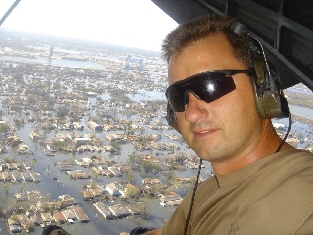 |
Special Operators demonstrate precision and skill at NASCAR
|
By: Bonita
Riddley
U.S. Army Special Operations
Command Public Affairs Office
ATLANTA (USASOC
News Service, March, 18 2007) Bringing the crowds to a
thunderous applause were the Special Operators from the U.S. Special
Operations Command in a pre-race demonstration of SOF Infiltration
techniques at NASCAR’s Kobalt Tools 500.
In what one might think may
be a tradition at the Atlanta Motor Speedway, NASCAR fans gathered not
only to cheer on their favorite driver, but also to pay honor to the
men and women of the Special Operations community.
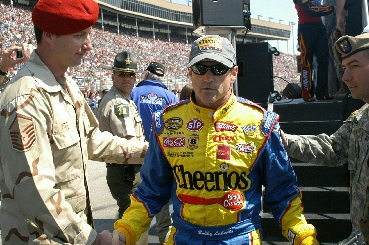 |
The U.S. Special Operations Command commander, Gen.
Bryan D. Brown talked with the special operators before the
demonstration. “For a very short period of time
here, we’re going to try and let people know something about
the Special Operations Command.”
NASCAR driver Bobby
Labonte shakes hands with Air Force Master Sgt. Michael R. West, 23rd
Special Tactics Squadron and Army Sgt. 1st Class Jesse Ragan, 75th
Ranger Regimen , before the start of the Kobalt Tools 500 at
Atlanta Motor Speedway.
Brown thanked the troops for their hard work both here
and on the battlefield.
“Because this type of battlefield that
we’re all facing today, you guys are the critical guys and
really for the first time in our life the real tip of the
spear,” said Brown. “Thank you.”
|
Present were
representatives from all four service components of USSOCOM to include
the U.S. Army Special Operations Command, Fort Bragg, N.C.; U.S Air
Force Special Operations Command, Hurlburt Field, Fla.; U.S. Navy
Special Warfare Command, Coronado, Calif. and the U.S. Marine Corps
Force Special Operations Command, Camp Lejeune, N.C. USSOCOM
is based at MacDill Air Force Base, Fla.
It was evident from the
cheers that NASCAR fans are proud of their service members as the
Special Operators entered the infield of the Atlanta Motor
Speedway. Fans stood to their feet as they rallied in support
of the Special Operators whose display of precision and skill is known
throughout the military
community.
“I think
they’re very proud of their military forces -- they should
be,” said Gen. Robert W. Wagner, commander, U.S. Army Special
Operations Command.
“To let them get
out here today and let them see some of the skills and capabilities
that they have is reassuring for the American public and it’s
reassuring for the military to know the close repor and respect they
have for one another,” Wagner said.
|
Wagner compared the teamwork of NASCAR to that of our
armed services.
“When you watch the NASCAR race,
what you see are teams of people that work extraordinarily well, the
match between the people and their equipment,” said
Wagner. How successful they are on the race day, is similar
to the teamwork that you see within the military.”
NASCAR
driver Kurt Busch shakes hands with Army Sgt. Edward Hull, 160th
Special Operations Aviation Regiment (Airborne) and Air Force Master
Sgt. Michael R. West, 23rd Special Tactics Squadron, before the start
of the Kobalt Tools 500 at Atlanta Motor Speedway.
Skill coupled with teamwork is why the military is
successful says Wagner.
“…what makes the military
successful are the highly skilled dedicated people. And so,
it is an interesting match between
|
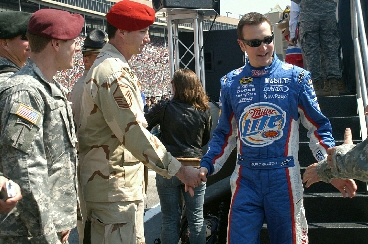 |
the skill and
teamwork that make the military successful, that which makes NASCAR
successful,” he concluded.
Bringing the crowd to their
feet first, were the Black Daggers, the U.S. Army Special Operations
Command's Parachute Demonstration Team. They opened the
pre-race pageantry demonstrating both tactical and precision
high-altitude, low-opening parachute jumps.
Showing the fans how they
secure an area, the four of the Daggers positioned themselves as if to
secure a landing zone. With the infield now
“secured,” a UH60 Black Hawk helicopter from the
USASOC Flight Detachment touched down offloading the USSOCOM and USASOC
commanders.
Highlighting the
capabilities and precision of the special operators, the
Speedway’s official pace car was delivered in the rear of a
MH-47E Chinook helicopter that was decorated with the Army-sponsored
racecar’s “01.”
As the pace car, embellished
with the USSOCOM’s 20th Anniversary emblem, made its way off
of the Chinook, thousands of cheering NASCAR fans rose to their
feet. This special delivery is indicative of a mission the
pilots and crew of the 160th Special Operations Aviation Regiment
(Airborne) do routinely in several areas of operations.
Moments later, eight Special
Operations warriors entered the Speedway aboard two MH-6 Little Bird
helicopters. Four more SOF warriors and Fox Sports NASCAR
analyst, Jeff Hammond, arrived beneath a MH60 Black Hawk rigged in
special patrol infiltration exfiltration system gear known as SPIES.
SPIES is a method used to insert or extract an individual or small
numbers of individuals into an area.
Following the insertion, the
SOF Warriors took a parade lap around the track before joining General
Brown on center stage. After introductions, each of the
NASCAR drivers exited the stage greeting the SOF warriors.
The last twelve drivers each invited a SOF Warrior to join them on
another parade lap around the track.
The final SOF involvement in
the pre-race pageantry was USASOC’s Chief Warrant Officer
Charlie King singing “God Bless America” and a
four-ship helicopter fly-by at the conclusion of the national anthem.
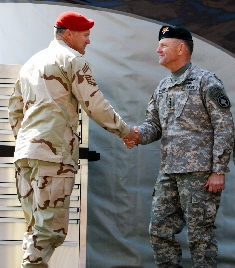 |
Demonstrations like
these are important to both the American people and the servicemember
according to both leaders and servicemen in the Special Operations
community.
Air Force Chief Master Sgt.
Timothy C. Hoye, 23rd Special Tactics Squadron, greets Gen. Byron
"Doug" Brown, commander of the U.S. Special Operations Command during
the pre-race festivities at the Atlanta Motor Speedway prior to the
start of the Kobalt Tools 500 NASCAR race.
“It is important to show the American public, who don't see
us every day throughout the United States, what we are
about,” said Warrant Officer James A. Mayernik, assistant
detachment commander, B Company, 3rd Battalion, 7th Special Forces
Group (Airborne), Fort Bragg, N. C.
“I have the
knowledge that the American people support us truly, and are behind us
100 percent. Just in the short time that I’ve been
here I can see that,” said Mayernik.
|
“I’m
taking away the fact the we have the support of the people,”
said Staff Sgt. Elisha Bremmer, Special Forces medical sergeant, 3rd
Bn., 7th SFG.
Also present were members of
the Army Accessions Command displaying the U.S. Army Special Operations
Adventure Van. NASCAR fans were able to simulate parachuting
or flying an MH-6 Little Bird. Other simulators are also
available for fans to experience.
Two Georgian-based Gold Star
families were also present for today’s events. Each
had lost a loved one who served their country while assigned to the
Army Special Operations Command.
SOF warriors representing
the USASOC in today’s events were Staff Sgt. Elisha Bremmer
and Warrant Officer James A. Mayernik of 3rd Battalion, 7th Special
Forces Group (Airborne); Staff Sgt. Adam Quick and Sgt. 1st Class Jesse
Ragan, Ranger Operations Company, 75th Ranger Regiment, Fort Benning,
Ga.; Sgt. Edward A. Hull, 160th Special Operations Aviation Regiment
(Airborne), Fort Campbell, Ky.; Sgt 1st Class Hiruy H. Gemechu, 96th
Civil Affairs Battalion (Airborne), Fort Bragg, N.C. and Sgt. Charles
P. Foote, 9th Battalion, 4th Psychological Operations Group
(Airborne), Fort Bragg, N.C.
Also representing the special operations community were Chief Master
Sgt. Timothy Hoye and Master Sgt. Michael R. West, 23rd Special Tactics
Squadron, U.S. Air Force Special Operations Command, Hurlburt Field,
Fla.; Staff Sgt. Will Welch, 2nd Marine Special Operations Battalion,
U.S. Marine Corps Forces Special Operations Command, Camp Lejeune, N.C.
and Special Operators Second Class Milton Santillanes and Jason
Tompsett from Naval Special Warfare Command’s Seal Team 8,
Little Creek, Va.
The aircraft demonstrating
precision and skill were from the 160th SOAR.